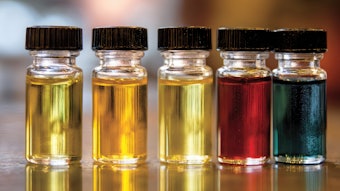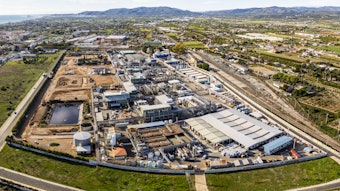The interest in (+)-3-carene as an intermediate for synthesis of pesticides odoriferous substances and other products had grown in recent years. It follows from the fact that (+)-3-carene became an easily accessible and relatively cheap raw material isolated, together with α-pinene, from turpentine of Pinus silvestris. However, contrary to α-pinene which found broad application for synthesis of odoriferous compounds, practical utilization of carene is small as yet.
Studying oxidation of (+)-3-carene, we obtained four stereoisomeric diols, in which the positions of the hydroxy groups in relation to the cyclopropane ring, determining also position of the methyl group at the carbon atom C-2, depended on the oxidizing agent used (see figure 1). (–)-3β, 4α-Caranediol was formed by oxidation of 1 with hydrogen peroxide in acetic or formic acid. (+)-3α,4β-Caranediol was obtained hy a sequence of reactions: diol 4, monotosylate of diol, β-epoxycarane and its solvolysis resulting in opening the epoxide ring with inversion on the carbon atom C-3. The third isomer, (+)-3α, 4α-caranediol was isolated from a multi-component reaction mixture after oxidation of 1 with KMnO4. The fourth diol, most interesting for us, (+)-3β, 4β-caranediol, was obtained by oxidation of 1 with iodine in the presence of silver acetate. This method is relatively expensive but silver salt can be regenerated almost quantitatively. All stereoisomeric diols are odorless.










